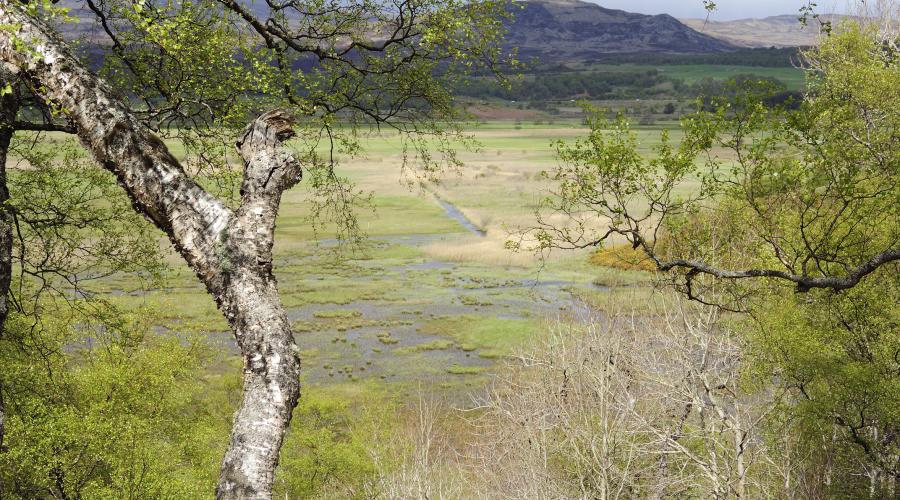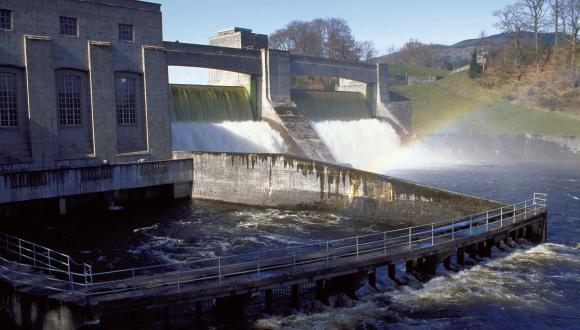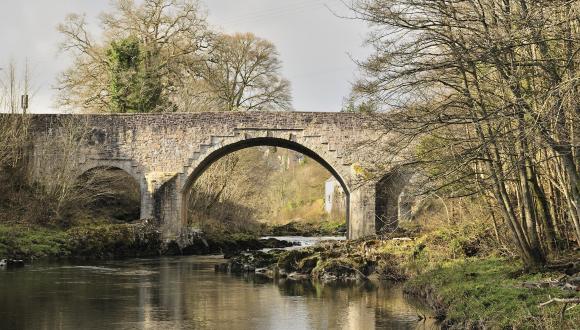
Flood management
Natural habitats can be used to help us manage flood risk, bringing benefits for biodiversity as well as communities.
Flooding is a natural process that can’t be prevented. The impacts on individuals and on communities can be severe. Flooding can also have impacts on wildlife.
Climate change is likely to increase the rate of flooding and we need to find new ways to deal with managing flooding. Natural habitats can be used to support flood regulation, an example of an ‘ecosystem service’.
Working with nature to manage flood risk
We can work to restore a catchment’s natural capacity to deal with floods to help us to manage flood risk. This is often referred to as natural flood management (NFM). Wetlands, floodplains and woodlands can act to slow the flow of water and store water in the catchment. This reduces the risk of settlements downstream being flooded.
Measures that use natural habitats and restore natural processes can be used along with traditional flood risk management measures, like concrete floodwalls.
Working with nature to manage flood risk can also:
- tackle diffuse pollution – e.g. buffer strips can reduce soil entering the water and help to slow and store floodwater
- improve biodiversity and geodiversity – e.g. removing flood embankments to reconnect a river with its floodplain
- improve landscape and amenities
- help to deal with coastal flooding and storm surges – e.g. moving back coastal flood defences lets new areas of coastal habitat develop, which can absorb wave energy
Flooding legislation
The Flood Risk Management (Scotland) Act 2009 transposes the EU Floods Directive. The Directive’s purpose is to establish a framework for assessing and managing flood risk.
It aims to reduce and mitigate the adverse effects of flooding on:
- human health
- the environment
- cultural heritage
- economic activity
Under the Directive, countries must produce flood risk management plans for areas of significant flood risk. Flooding legislation no longer focuses on trying to prevent flooding but on managing flood risk.
Learn more about action to manage flooding risk in Scotland on the Scottish Government website.
Land management
The Scottish Environment Protection Agency (SEPA) and local authorities are chiefly responsible for taking forward the flooding legislation.
Flood protection schemes will include traditional measures such as flood walls and may also use natural habitats across a catchment to reduce flood risk.
To do this, land managers must be actively involved, by:
- making voluntary changes in land management in response to advice
- applying for relevant Scottish Rural Development Programme (SRDP) funding
- negotiating changes in land management with councils, to allow them to work with natural habitats to manage flood risk
Urban areas
NFM measures can be used to reduce flood risk for urban areas. Some NFM measures are best used in a catchment’s upper reaches. This may help to reduce how much floodwater reaches towns and cities or slow its flow, allowing more time for flood warnings.
But restoring or creating habitats and areas of greenspace in urban areas can also help. These green spaces can enhance the amenity of urban areas and provide space for biodiversity too.
Examples of such measures include:
- creating and maintaining green corridors to allow for stormwater flows
- increasing use of sustainable urban drainage systems
- maintenance of areas of greenspace that enhance the local environment and can also be used for flood storage
Our role in flood risk management
Under the Flood Risk Management Act, NatureScot will:
- be consulted by SEPA and local authorities on flood protection schemes and flood risk management plans
- provide advice to national and local advisory groups
- advise on the impact of flood protection schemes on designated sites and species of national and international importance
- promote working with nature to manage flood risk





